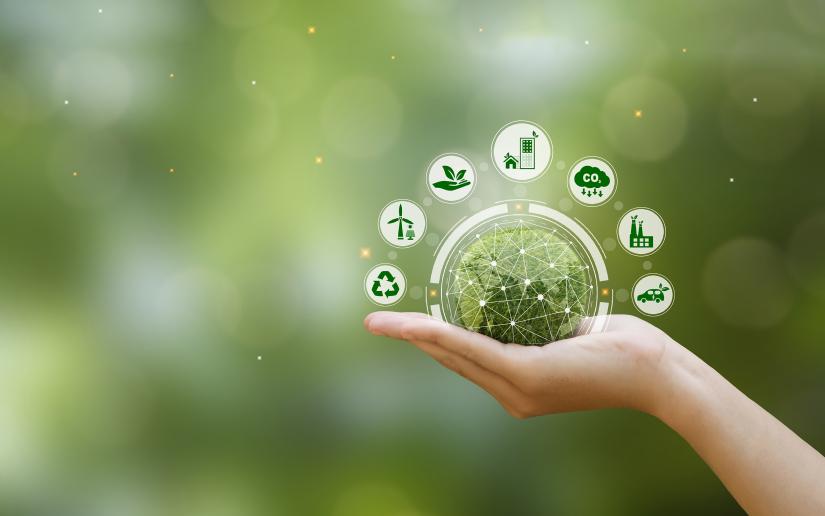Australians largely support transforming the economy to increase recycling, repurpose products and reduce waste, according to a new report from the Productivity Commission, but they are being impeded by inconsistent regulations.
The interim report of the commission’s inquiry into Australia’s circular economy, released Wednesday night, also finds consumers need more information about the durability and repairability of products.
The report says that despite increased awareness of the benefits of a circular economy, the transformation has been complex and progress has been slow.
What is a circular economy?
A circular economy is based on three principles.
The first is designing and making goods without waste and pollution. This includes using renewable energy to reduce carbon emissions.
The second is keeping products and materials in use for as long as possible. This can be achieved by maintaining or repairing products to extend their life.
The third principle is regeneration. This means promoting activities with positive outcomes. This could include activities to deal with biodiversity loss, or social benefits through food relief and donations.
Some businesses are already using circular economy practices but compared to other developed countries, Australia is well behind. The recent CSIRO study found only 3.7% of the Australian economy is circular, half of the world’s average of 7.2%.
In December last year the Federal government released the National Circular Economy Framework providing guidance how to increase circularity.
Coinciding with this, the Productivity Commission evaluated circular economy opportunities in six priority sectors – built environment, food and agriculture, textiles and clothing, vehicles, mining and electronics.
Priority areas
The priority areas were selected based on the impact their materials has on the environment and the economy.
For example, the construction sector uses large quantities of materials which are expensive to recycle. While the increased use of electric vehicles is a bonus for the environment, the lithium-ion batteries they use pose a fire risk if incorrectly managed.
How much impact a particular area has on Australia, was also taken into account.
For example, Australians are the largest consumers of textiles in the world per capita. But most of these are imported, limiting our influence on how they are made.
Also, the impact and effectiveness of policies and regulations was also considered. Stakeholders across government and community sectors provided detailed submissions that informed the commission’s assessment.
Getting consumers, government and business onboard
The Productivity Commission noted material consumption and waste generation has not changed since 2010. This is because consumers are not repairing and reusing appliances or recycling which is important to a circular economy.
Australia generates some of the highest amounts of waste per capita in the world, including food waste, plastic waste, e-waste and textile waste.
While the report recommends how food waste should be managed, consumers need to change their behaviour to reduce the waste they generate.
To do this, however, consumers need information about making informed purchasing decisions. For e-waste, they need easy access to repair services to extend the life of their products rather than buying new.
The report repeats earlier recommendations about repairs and reuse from the Productivity Commission’s 2021 Right to Repair inquiry.
That inquiry recommended the government develop a product labelling scheme giving consumers information about how durable household appliances are and whether they can be repaired.
We believe implementing these recommendations would bring Australia in line with global best practice reflected in the European Eco-design Sustainable Product regulations.
Impeded by regulations
This report highlights the importance of consistent policies and regulations. These currently vary across sectors and jurisdictions.
Standards enabling the use of recycled materials in construction, consistent rules on the disposal of lithium-ion batteries and consistent kerbside recycling guidelines were all needed.
The Circular Economy Ministerial Advisory Group recommended in their final report in December new legislation, a governance model and investment in innovation to help Australia move to a circular economy.
Help for business
When designed well, circular business models have the potential to reduce waste materials and carbon emissions.
 Comparing the circular and linear economies. Productivity Commission, CC BY-SA
Comparing the circular and linear economies. Productivity Commission, CC BY-SA
However, changing industry and consumer practices represents a big change. As well as inconsistent regulations slowing the transformation, making processes more innovative and experimenting with new technologies can be costly.
The Productivity Commission report says government can help reduce barriers to implementation of circular business models given business has a pivotal role in driving this transition.
It also supports product stewardship, an approach where producers, importers and brands are responsible and liable for the impact their products have on the environment and on human health across the product life cycle.
Regulations for product stewardship was identified in the report as important, particularly in textiles and clothing, vehicles, EV batteries, solar panels and consumer electronics.
Towards net zero
Several international studies have reported that a circular economy will be needed to achieve net zero targets.
In Australia, the industry sector including mining, manufacturing and construction is responsible for around 34% of total emissions. Using materials more efficiently will help reduce them.
Agriculture, despite its small contribution to the GDP (2.4%), alone contributes 18% to greenhouse gas emissions.
As the report notes, most of these emissions (80%) come from livestock and use of synthetic fertilisers (15%). But only food waste is identified as one of the priority areas.
It should be noted though that food waste only accounts for 3% of emissions. So reducing emissions from agriculture, switching to renewable fertilisers and changing livestock diets should also be a priority.
The Productivity Commission will send its final report to government by August this year.
Melita Jazbec, Research Director at the Institute for Sustainable Futures, University of Technology Sydney; Monique Retamal, Research Director, Institute for Sustainable Futures, University of Technology Sydney; Nick Florin, Associate Professor and Research Director, Institute for Sustainable Futures, University of Technology Sydney, and Stuart White, Director, Institute for Sustainable Futures, University of Technology Sydney
This article is republished from The Conversation under a Creative Commons license. Read the original article.



